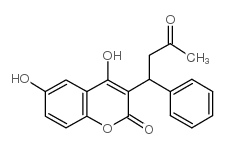| Structure | Name/CAS No. | Articles |
|---|---|---|
 |
4-HYDROXYWARFARIN
CAS:24579-14-4 |
|
 |
6-hydroxy Warfarin
CAS:17834-02-5 |
|
 |
8-HYDROXYWARFARIN
CAS:17834-04-7 |